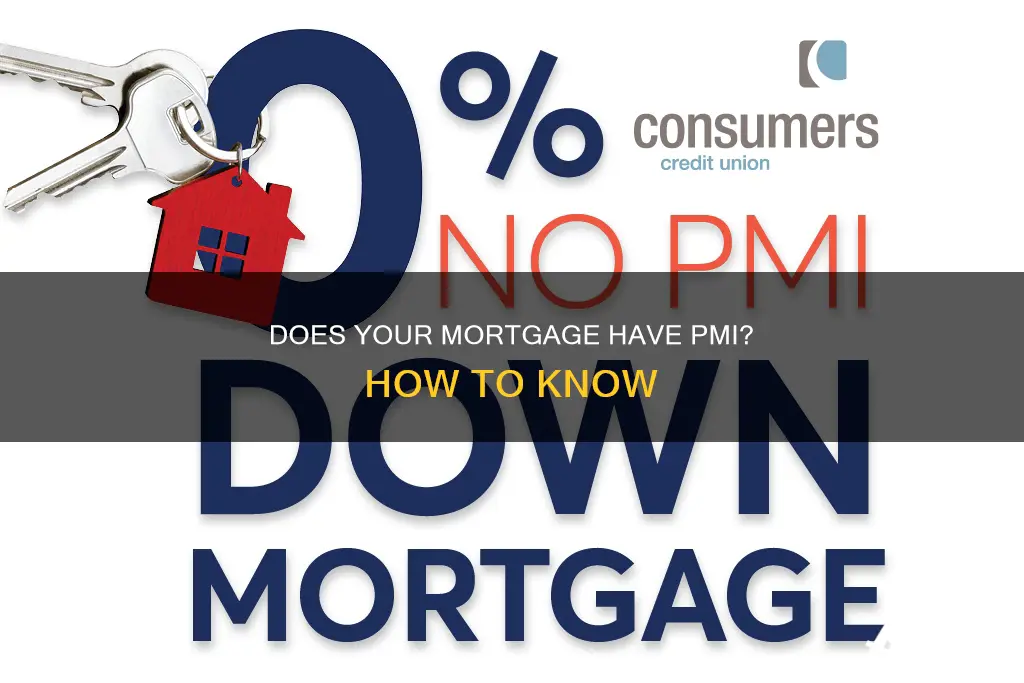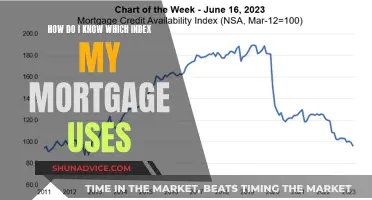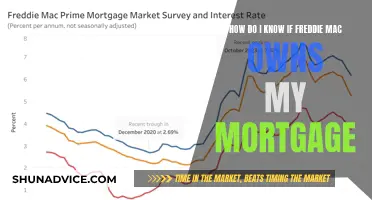
Private Mortgage Insurance (PMI) is an insurance policy that protects your mortgage lender from financial loss if you stop making mortgage payments. PMI is usually required when the buyer makes a down payment of less than 20% of the home's value. It is added to your mortgage payment and can be paid upfront or as a combination of upfront and monthly payments. The simplest way to find out if your mortgage has PMI is to check your monthly mortgage payment breakdown or contact your lender.
| Characteristics | Values |
|---|---|
| Required | When the buyer makes a down payment of less than 20% of the home's value |
| Who does it protect? | The lender, not the buyer |
| When can it be removed? | When the buyer has paid their loan balance below 80% of the purchase price of their home or once they have achieved 20% equity in their home |
| How is it paid? | Monthly, upfront at closing, or a combination of upfront and monthly |
| How much does it cost? | Typically 0.5% to 1.5% of the total loan amount, or $30 to $70 per month for every $100,000 borrowed |
| How to cancel | Contact the lender or servicer in writing, provide a good payment history, and confirm there are no other liens on the home |
What You'll Learn

What is PMI?
Private Mortgage Insurance (PMI) is a type of mortgage insurance that you may be required to buy if you take out a conventional loan with a down payment of less than 20% of the purchase price. It is an insurance policy that you pay for to protect your mortgage lender from financial loss if you stop making mortgage payments. It is important to note that PMI does not protect you; it only protects the lender.
PMI is usually required for conventional loans when the buyer makes a down payment of less than 20% of the home's value. This is because loans with low down payments have a high loan-to-value (LTV) ratio, meaning the amount of the mortgage is high compared to the assessed value of the property. As a result, the lender assumes additional risk by accepting a lower amount of upfront money towards the purchase.
The cost of PMI depends on several factors, including the size of the mortgage loan, the down payment amount, and your credit score. The more you borrow and the lower your down payment and credit score, the higher your PMI cost will be. PMI is typically paid as part of your monthly mortgage payment, but some lenders may offer the option to pay the cost upfront at closing or a combination of upfront and monthly payments.
You can avoid paying for PMI by making a 20% down payment. Additionally, PMI can generally be removed from your monthly payments once you have achieved 20% equity in your home or have paid your loan balance down below 80% of the purchase price.
Fannie Mae: Does It Own My Mortgage?
You may want to see also

How much does PMI cost?
The cost of private mortgage insurance (PMI) varies depending on several factors, including the down payment amount, the homebuyer's credit score, and the loan amount.
PMI is typically required for conventional mortgage borrowers who put down less than 20% on a home. The insurance protects the lender against the risk of default by the borrower. The average cost of PMI ranges from 0.2% to 2% of the loan amount per year, but it can be higher or lower depending on individual factors. For example, a borrower with a 3% down payment and a credit score below 680 may pay more than 1% of the loan amount annually, while a borrower with a 15% down payment and an excellent credit score may pay less than 0.5%.
The Urban Institute's Housing Finance Policy Center estimates the average cost of PMI to be between 0.46% and 1.5% of the original loan amount per year. This means that PMI on a $300,000 mortgage could cost between $1,380 and $4,500 per year, or approximately $115 to $375 per month.
It's worth noting that PMI rates have been decreasing in recent years, providing more flexibility for borrowers with lower down payments. Additionally, PMI is not a permanent cost, and it can be canceled once the loan-to-value (LTV) ratio drops to 80%.
To estimate the total cost of PMI over the life of a mortgage, individuals can use online PMI calculators, which take into account various factors to provide a more accurate estimate.
Finding Mortgage Protection: Where to Start Your Research
You may want to see also

When is PMI required?
Private Mortgage Insurance (PMI) is a type of mortgage insurance that is usually required in a few specific scenarios. The most common scenario is when a homebuyer makes a down payment of less than 20% of the home's value on a conventional loan. In this case, PMI is typically required to protect the lender in case the buyer stops making loan payments.
Another scenario where PMI may be required is when refinancing a conventional loan. If the equity in your home is less than 20% of its value, PMI may be necessary. Additionally, PMI is required on most FHA and VA loans, as well as some non-traditional loan types.
The requirement for PMI depends on several factors, including the size of the down payment, credit score, loan type, and individual financial circumstances. While PMI can help buyers qualify for loans they might not otherwise be eligible for, it does increase the overall cost of the loan.
It's important to note that PMI is not permanent and can be removed or cancelled under certain conditions, such as when the loan balance reaches 78%-80% of the original value or when the buyer achieves 20% equity in the home.
Who Owns Your Mortgage? Trace Your Mortgage Backers
You may want to see also

How to cancel PMI?
Private Mortgage Insurance (PMI) is an insurance policy that you pay for to protect your mortgage lender from financial loss if you stop making mortgage payments. It is usually required when the buyer makes a down payment of less than 20% of the home's value. The cost of PMI can be spread out over years, but it still amounts to a considerable sum of money.
There are several ways to cancel PMI:
- Wait for automatic cancellation: Federal law requires mortgage lenders to automatically cancel PMI when the balance of the mortgage drops to 78% of the home's purchase price, or when the loan term is at its halfway point, whichever comes first.
- Request cancellation: You can ask for PMI to be cancelled as soon as your balance hits 80% of the original value of your home, as long as you are in good standing with your payments. You can make this request in writing to your lender or servicer.
- Refinance: With rising home values, you may have the equity required to refinance and avoid paying PMI. You may also be able to refinance from an FHA to a conventional loan, eliminating your MIP.
- Reappraisal: You can pay for a new appraisal to get a higher valuation of your home. If your loan balance is no more than 80% of the new valuation, you can request PMI cancellation.
- Pay down your mortgage faster: Making extra mortgage payments can help you reach 20% equity faster, at which point you can request PMI cancellation.
Understanding Mortgage Foreclosure: Your Guide to the Process
You may want to see also

PMI vs mortgage insurance
Private mortgage insurance (PMI) is an insurance policy that you pay for to protect your mortgage lender from financial loss if you stop making mortgage payments. It is required when the down payment or equity amount is less than 20% and it compensates the lender if a borrower defaults on a loan. It is important to note that PMI does not protect you as the borrower; it only protects the lender.
There are three types of PMI:
- Borrower-paid PMI (BPMI): The borrower pays the annual premium through monthly installments added to their mortgage. It is the most common type of PMI.
- Lender-paid PMI (LPMI): The lender pays PMI upfront for the borrower and charges a slightly higher interest rate in exchange.
- Single-pay PMI: The borrower pays off the premium with a lump-sum payment at closing.
On the other hand, Mortgage Insurance Premium (MIP) is the mortgage insurance that is required on FHA loans, which are loans backed by the Federal Housing Administration. MIP is considered a type of mortgage insurance, but it is different from PMI. MIP has two types: upfront MIP (UFMIP) and annual MIP. UFMIP is a one-time payment usually made at closing that typically equals 1.75% of the total loan amount. Annual MIP is based on the total loan amount, the loan term, and the amount of the down payment. The fee can range from 0.15% to 0.75% of the outstanding loan amount and is usually paid as part of the monthly mortgage payment.
The main difference between PMI and MIP is that PMI is associated with conventional loans, while MIP is associated with FHA loans. PMI is typically required on conventional loans with a down payment below 20%, while MIP is required on all FHA loans, regardless of the size of the down payment.
In summary, PMI and MIP are both types of mortgage insurance, but they apply to different types of loans and have different requirements and features. PMI is required on conventional loans with a down payment of less than 20% and protects the lender in case of borrower default. MIP, on the other hand, is required on FHA loans and has both upfront and annual payment components. It is important to understand the differences between PMI and MIP when considering different loan options.
Freezing Your Mortgage: Exploring Your Options and Taking Control
You may want to see also
Frequently asked questions
Private Mortgage Insurance (PMI) is an insurance policy that protects your mortgage lender from financial loss if you stop making mortgage payments.
PMI is required when homebuyers make a down payment of less than 20% of the home's value. It is also required on most FHA and VA loans, as well as some non-traditional loan types.
PMI is usually paid as part of your monthly mortgage payment. It may be listed on your statement as "PMI", "Private Mortgage Insurance", or "Mortgage Insurance". You can also refer to your Loan Estimate and Closing Disclosure, where the premium will be shown on page 2, in section B.
Yes, you have the right to remove PMI for many mortgages once you have paid down your mortgage to a specified point, typically when you reach 78-80% of the original value of your home.
The simplest way to reduce PMI costs is to make a larger down payment when purchasing your home. A down payment of 20% or more will usually exempt you from PMI requirements.







